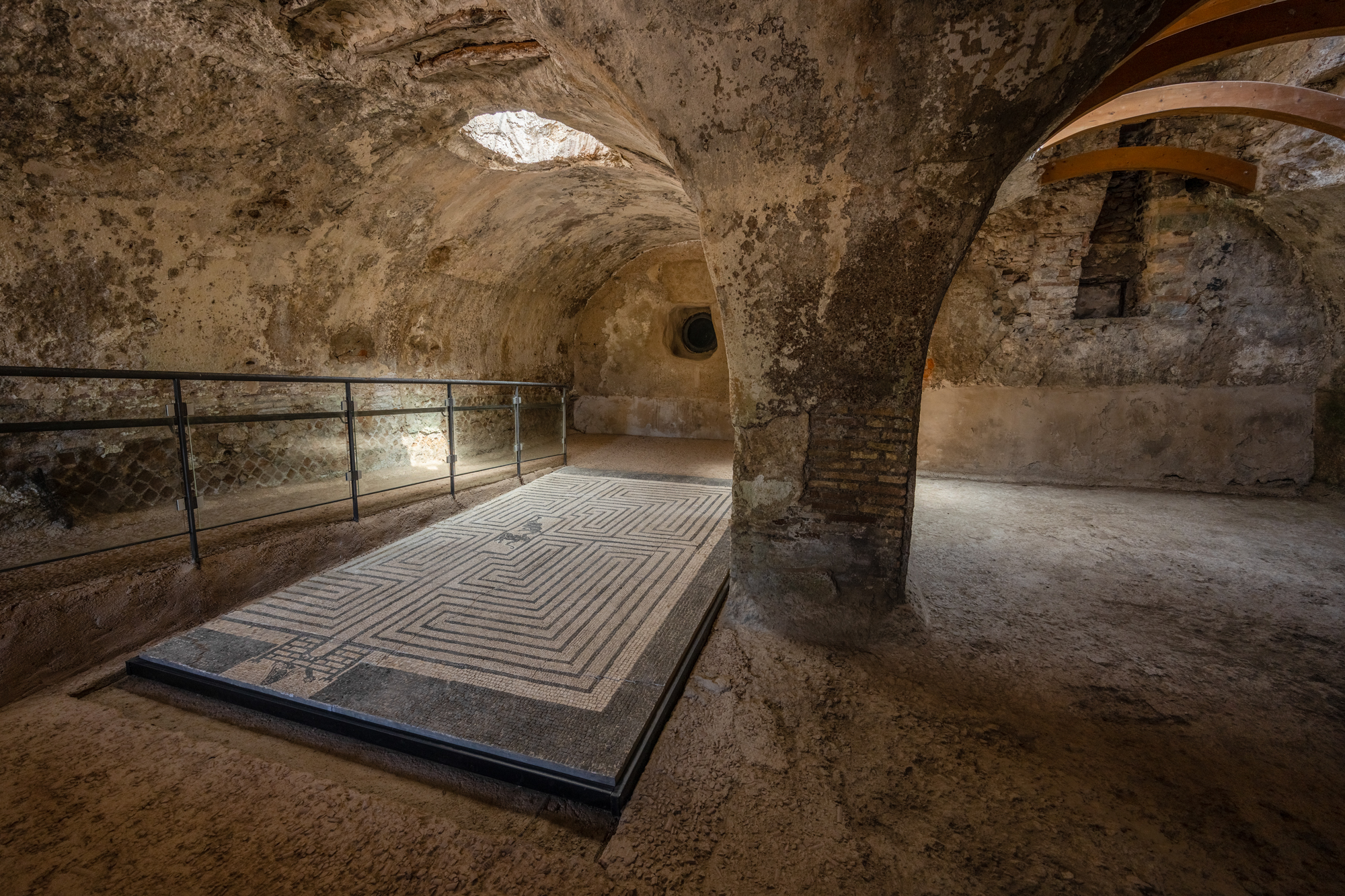 More than 30 years after it was removed, the famous Labyrinth Mosaic has returned to Giannutri, the southernmost island of the Tuscan Archipelago. In black and white tiles, the mosaic depicts the intricate labyrinth of Knossos. Hero Theseus confronts the Minotaur in the center while Ariadne waits off to the side, holding the ball of thread that will lead Theseus out of the maze and back to safety.
More than 30 years after it was removed, the famous Labyrinth Mosaic has returned to Giannutri, the southernmost island of the Tuscan Archipelago. In black and white tiles, the mosaic depicts the intricate labyrinth of Knossos. Hero Theseus confronts the Minotaur in the center while Ariadne waits off to the side, holding the ball of thread that will lead Theseus out of the maze and back to safety.
The mosaic was uncovered between 1928 and 1934 in excavations of the 1st century A.D. villa of the Domitii Ahenobarbi family, a prestigious plebian family with a long line of consuls going back at least to the early 2nd century B.C. who married into the Julio-Claudian dynasty. The emperor Nero was born Lucius Domitius Ahenobarbus, the son of Gnaeus Domitius Ahenobarbus and Agrippina the Younger, great-granddaughter of the emperor Augustus. In the late Republic and early Empire, when the Ahenobarbi were at their peak of wealth and influence, they had no fewer than three pleasure palaces on islands in the Tuscan Archipelago, each with their own ports for the family’s sailing ships. One of the luxurious seaside villas on the island of Giannutri. It was a vast complex with utilitarian structures (cisterns, latrines) and elegant residential ones (peristyle gardens, reception rooms, baths). The rooms were large and its decorative marbles and mosaics of the finest quality.
 The find site of the mosaic — in front of the entrance to the villa — was private property and open and exposed fully to the elements. By the time the Superintendency surveyed the condition of the mosaics in 1989, they had deteriorated significantly. Authorities decided it was necessary to remove the most significant one, the Labyrinth, to prevent further deterioration and conserve what remained. The lower half of the mosaic was already completely lost, and had the mosaic remained in situ, the rest of it would not have survived for long. It was detached in 1991 and stored.
The find site of the mosaic — in front of the entrance to the villa — was private property and open and exposed fully to the elements. By the time the Superintendency surveyed the condition of the mosaics in 1989, they had deteriorated significantly. Authorities decided it was necessary to remove the most significant one, the Labyrinth, to prevent further deterioration and conserve what remained. The lower half of the mosaic was already completely lost, and had the mosaic remained in situ, the rest of it would not have survived for long. It was detached in 1991 and stored.
 A decade later, the mosaic was transferred to a conservation laboratory in Rome where the scattered black and white tiles were re-added to the mosaic using archival photographs from its discovery as guides. It was moved to the warehouse of the National Archaeological Museum of Florence in 2002. It was only displayed publicly twice, exhibited briefly in 2003 and 2004. It has remained in the National Archaeological Museum of Florence for 20 years.
A decade later, the mosaic was transferred to a conservation laboratory in Rome where the scattered black and white tiles were re-added to the mosaic using archival photographs from its discovery as guides. It was moved to the warehouse of the National Archaeological Museum of Florence in 2002. It was only displayed publicly twice, exhibited briefly in 2003 and 2004. It has remained in the National Archaeological Museum of Florence for 20 years.
In 2022, the Archaeological Superintendency of Tuscany began to plan the return of the mosaic to its place of origin on Giannutri. First it was subjected to a new cleaning and conservation. There was some limited damage (shifting of tiles), but the adhesion to the panels was still strong; there were no cracks, no accumulated salts. The mosaic was consolidated and a new support structure installed to anchor the mosaic panels.
The mosaic was transported to Giannutri this summer where it was installed in the cryptoporticus area, not in its the original location. The cryptoporticus is completely covered, providing protection from the elements.
